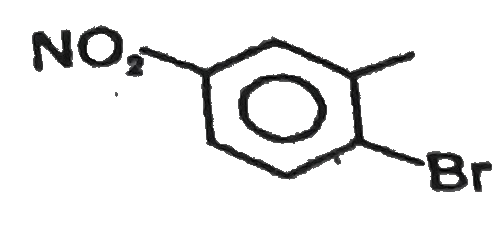Aldehydes and Ketones reacts with NH2OH to form Aldoximes and Ketoximes respectively.Configuration of these can be determined by Beckmann rearrangement as that group migrates which is anti w.r.t-OH

It is interesting to note that the migration of group is completely retentive and no loss of optical activity is seen.


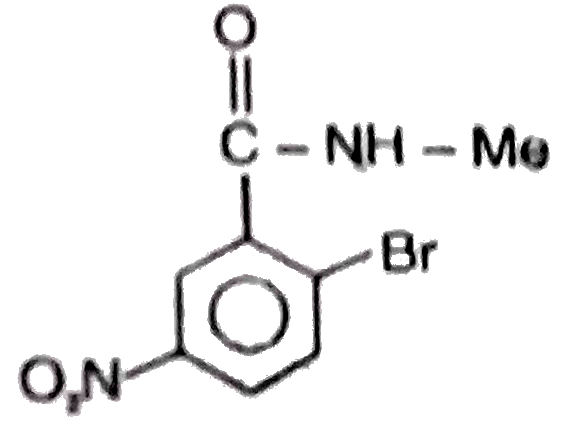
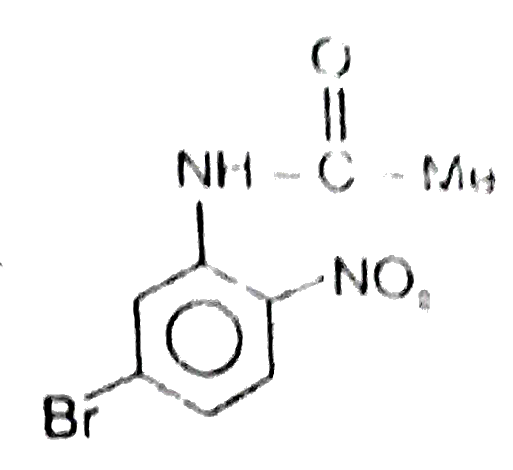
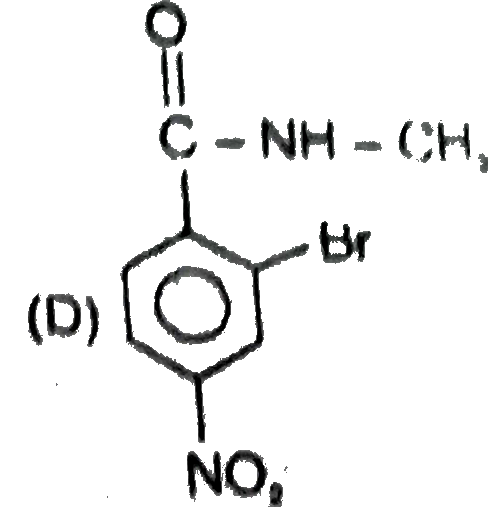
The correct Answer is:A
Topper's Solved these Questions
Similar Questions
Aldehydes and Ketones react with NH2OH to form aldoximes and Ketoximes respectively. Configuration of these can be determined by Beckmann rearragement as that group migrates which is anti w.r.t -OH

Which step is Rate determening step ?View SolutionAlldehydes and Ketones react with NH2OH to form aldoximes and Ketoximes respectively. Configuration of these can be determined by Beckmann rearragement as that group migrates which is anti w.r.t -OH

[X]H2SO4−−−→H2O−−→Ph−NH2+CH3−C∣∣O−OH
Identify the configuration of [X] compoundView Solution
Knowledge Check
- Question 1 - Select One
Alldehydes and Ketones react with NH2OH to form aldoximes and Ketoximes respectively. Configuration of these can be determined by Beckmann rearragement as that group migrates which is anti w.r.t -OH

Which step is Rate determening step ?AIBIICIIIDIV - Question 2 - Select One
Alldehydes and Ketones react with NH2OH to form aldoximes and Ketoximes respectively. Configuration of these can be determined by Beckmann rearragement as that group migrates which is anti w.r.t -OH

[X]H2SO4−−−→H2O−−→Ph−NH2+CH3−C∣∣O−OH
Identify the configuration of [X] compoundA B
B C
C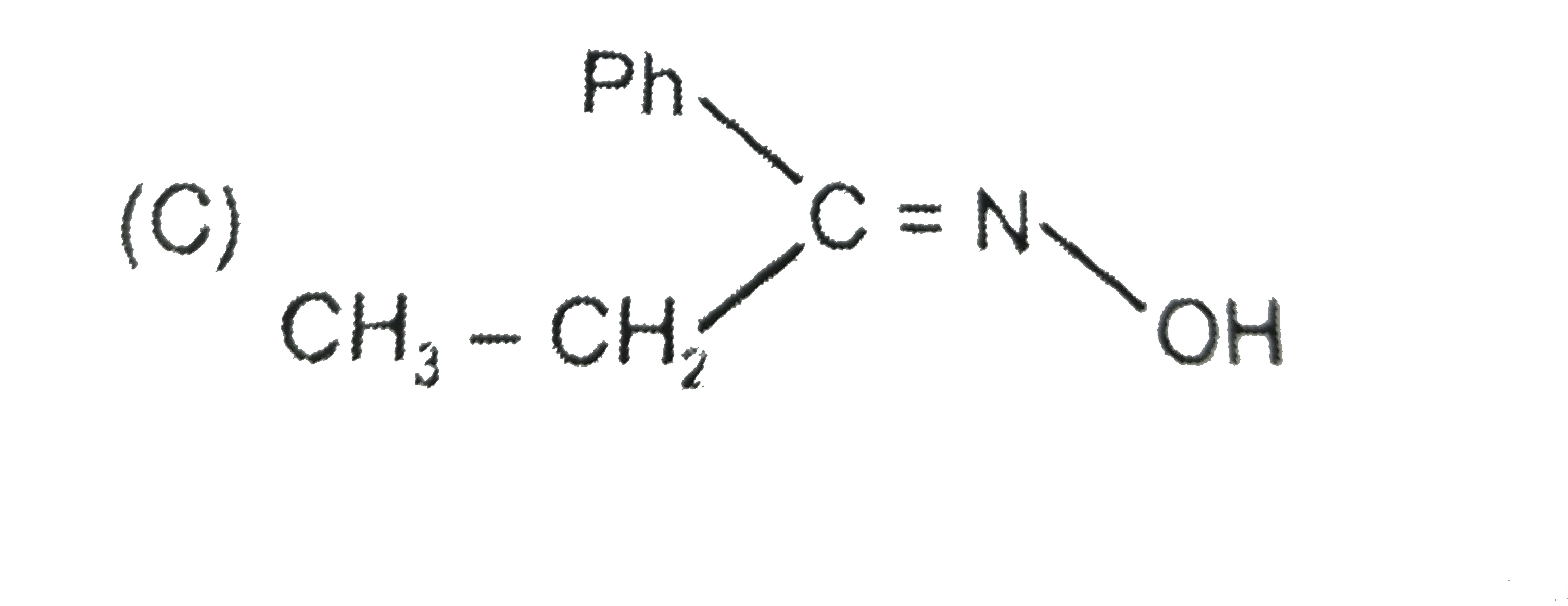 D
D
- Question 3 - Select One
In organic chemistry various reactions take place by rearrangements. These rearrangements can be classified on the basis of migratory group and its nature. One of the well-known rearrangement is the formation of N-substituted amides by rearrangement of aldoximes or ketoximes. This is known as Beckmann rearrangement. It is catalysed by various acidic reagents. The mechanism of this reaction is given as

(CH3)(C2H5)C=NOHC6H5SO2Cl−−−−−−→(A)H2O/H⊕−−−−−→CH3NH2+C2H5COOH
The formation of final product suggest the migration of :A−CH3 groupB−C2H5 groupCC6H5−SO2 - groupDcannot predicted without structure
Alldehydes and Ketones react with NH2OH to form aldoximes and Ketoximes respectively. Configuration of these can be determined by Beckmann rearragement as that group migrates which is anti w.r.t -OH


The product (B) is :View SolutionMonosaccharides are polyhydric aldehydes and ketones which cannot be hydrolysed into simpler carbohydrates. The monosaccharides containing −CHO group are called aldoses while those containing C=O group are called ketoses. The aldehyde group is always present at C1 while keto group is generally present at C2. All monosaccharides are oxidised by Tollen's reagent and Fehling solution and are called reducing sugars.
The monosaccharide molecules may be assigned D and L-configurations depending upon whether the configuration of the molecule is related to D- or L-glyceraldehyde. If the −OH group is attached to the carbon adjacent to the −CH2OH group (last chiral carbon) is on the right hand side, it is assigned D-configuration. The molecule is assigned L-configuration if the -OH group attached to the carbon adjacent to the −CH2OH group is on the left. The monosaccharides contain one or more chiral carbon atoms. Pentoses and hexoses have cyclic structures furanose (five membered) and pyranose (six membered). During cyclization, C1 in aldohexoses and C2 in fructose become chiral and the newly formed -OH group may be either on the left or on the right in Fischer projection formulae. These monosaccharides, therefore, exist in two stereoisomeric forms called α-anomer and β-anomer while C1andC2 are called glycosidic or anomeric carbon. The bonds joining glycosidic carbon are called glycosidic linkages. D(+) glucose exists in two stereoisomeric forms, α-D- glucose and β-D-glucose. When either of these two forms of glucose i.e., α−D−glucose are dissolved in water and allowed to stand, these get slowly converted into other form and an equilibrium mixture of both is formed. This process is called mutarotation.
The maximum number of optical isomers of glucose expected areView SolutionMonosaccharides are polyhydric aldehydes and ketones which cannot be hydrolysed into simpler carbohydrates. The monosaccharides containing −CHO group are called aldoses while those containing C=O group are called ketoses. The aldehyde group is always present at C1 while keto group is generally present at C2. All monosaccharides are oxidised by Tollen's reagent and Fehling solution and are called reducing sugars.
The monosaccharide molecules may be assigned D and L-configurations depending upon whether the configuration of the molecule is related to D- or L-glyceraldehyde. If the −OH group is attached to the carbon adjacent to the −CH2OH group (last chiral carbon) is on the right hand side, it is assigned D-configuration. The molecule is assigned L-configuration if the -OH group attached to the carbon adjacent to the −CH2OH group is on the left. The monosaccharides contain one or more chiral carbon atoms. Pentoses and hexoses have cyclic structures furanose (five membered) and pyranose (six membered). During cyclization, C1 in aldohexoses and C2 in fructose become chiral and the newly formed -OH group may be either on the left or on the right in Fischer projection formulae. These monosaccharides, therefore, exist in two stereoisomeric forms called α-anomer and β-anomer while C1andC2 are called glycosidic or anomeric carbon. The bonds joining glycosidic carbon are called glycosidic linkages. D(+) glucose exists in two stereoisomeric forms, α-D- glucose and β-D-glucose. When either of these two forms of glucose i.e., α−D−glucose are dissolved in water and allowed to stand, these get slowly converted into other form and an equilibrium mixture of both is formed. This process is called mutarotation.
Two forms of D-glucopyranose are calledView SolutionMonosaccharides are polyhydric aldehydes and ketones which cannot be hydrolysed into simpler carbohydrates. The monosaccharides containing −CHO group are called aldoses while those containing C=O group are called ketoses. The aldehyde group is always present at C1 while keto group is generally present at C2. All monosaccharides are oxidised by Tollen's reagent and Fehling solution and are called reducing sugars.
The monosaccharide molecules may be assigned D and L-configurations depending upon whether the configuration of the molecule is related to D- or L-glyceraldehyde. If the −OH group is attached to the carbon adjacent to the −CH2OH group (last chiral carbon) is on the right hand side, it is assigned D-configuration. The molecule is assigned L-configuration if the -OH group attached to the carbon adjacent to the −CH2OH group is on the left. The monosaccharides contain one or more chiral carbon atoms. Pentoses and hexoses have cyclic structures furanose (five membered) and pyranose (six membered). During cyclization, C1 in aldohexoses and C2 in fructose become chiral and the newly formed -OH group may be either on the left or on the right in Fischer projection formulae. These monosaccharides, therefore, exist in two stereoisomeric forms called α-anomer and β-anomer while C1andC2 are called glycosidic or anomeric carbon. The bonds joining glycosidic carbon are called glycosidic linkages. D(+) glucose exists in two stereoisomeric forms, α-D- glucose and β-D-glucose. When either of these two forms of glucose i.e., α−D−glucose are dissolved in water and allowed to stand, these get slowly converted into other form and an equilibrium mixture of both is formed. This process is called mutarotation.
Which of the following pairs give positive Tollen's test?View SolutionMonosaccharides are polyhydric aldehydes and ketones which cannot be hydrolysed into simpler carbohydrates. The monosaccharides containing −CHO group are called aldoses while those containing C=O group are called ketoses. The aldehyde group is always present at C1 while keto group is generally present at C2. All monosaccharides are oxidised by Tollen's reagent and Fehling solution and are called reducing sugars.
The monosaccharide molecules may be assigned D and L-configurations depending upon whether the configuration of the molecule is related to D- or L-glyceraldehyde. If the −OH group is attached to the carbon adjacent to the −CH2OH group (last chiral carbon) is on the right hand side, it is assigned D-configuration. The molecule is assigned L-configuration if the -OH group attached to the carbon adjacent to the −CH2OH group is on the left. The monosaccharides contain one or more chiral carbon atoms. Pentoses and hexoses have cyclic structures furanose (five membered) and pyranose (six membered). During cyclization, C1 in aldohexoses and C2 in fructose become chiral and the newly formed -OH group may be either on the left or on the right in Fischer projection formulae. These monosaccharides, therefore, exist in two stereoisomeric forms called α-anomer and β-anomer while C1andC2 are called glycosidic or anomeric carbon. The bonds joining glycosidic carbon are called glycosidic linkages. D(+) glucose exists in two stereoisomeric forms, α-D- glucose and β-D-glucose. When either of these two forms of glucose i.e., α−D−glucose are dissolved in water and allowed to stand, these get slowly converted into other form and an equilibrium mixture of both is formed. This process is called mutarotation.
Which of the following statements is not correct?View Solution

